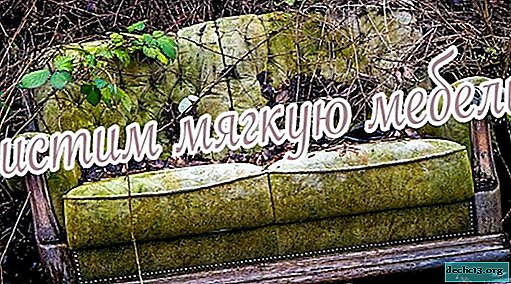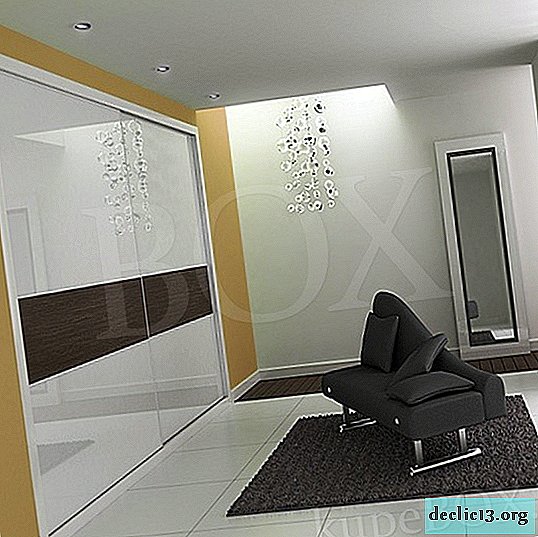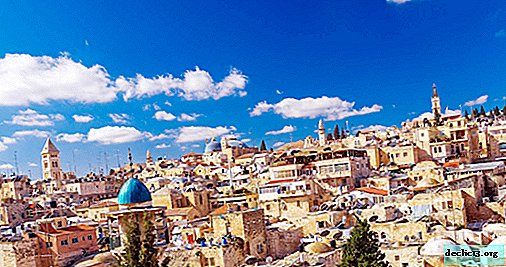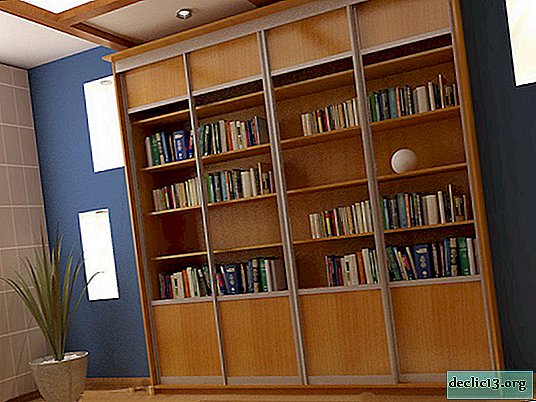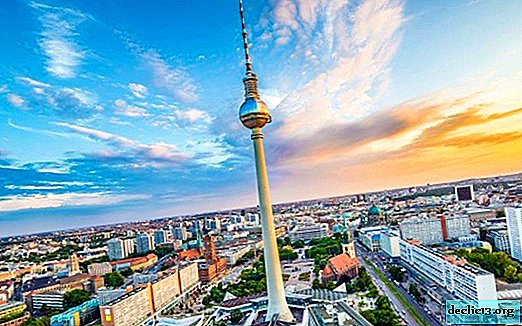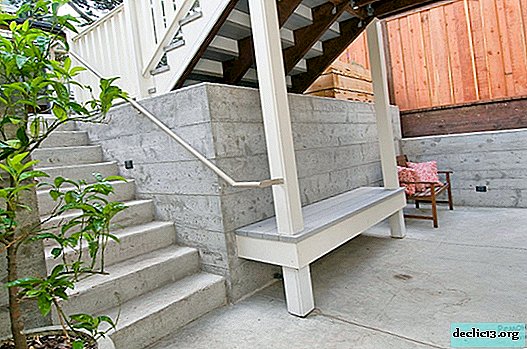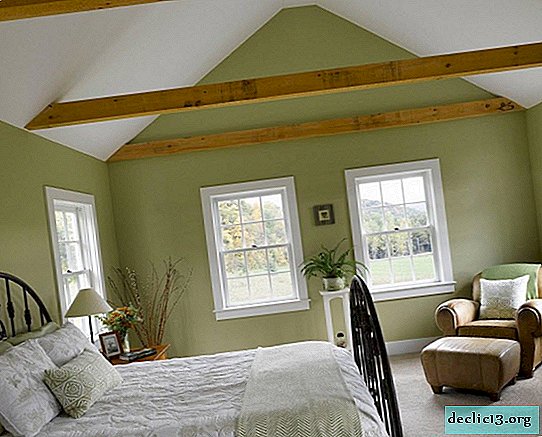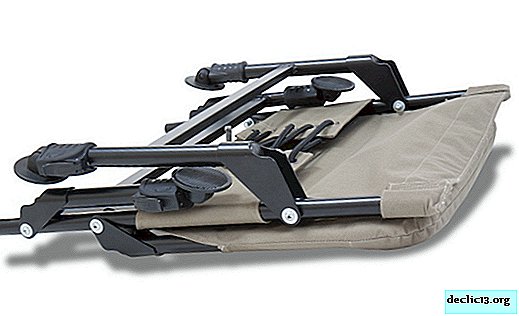We plan a trip to Muenster - an old city in Germany
Muenster, Germany - one of the oldest cities not only in Westphalia, but throughout Germany. This place on the map of the country cannot be called promoted from the point of view of tourism, but the city, despite its modern appearance, has retained the medieval aristocracy in the historical part. Given the large number of young people and students in Münster, the nightlife here is not inferior to the megacities of Germany.

Photo: Muenster city
General information
The city of Muenster is one of the administrative centers of Westphalia with a rich history, cultural and architectural heritage. Located almost on the border with the Netherlands. The official year of foundation is 793 BC, the Münster Catalan Bishopric is considered the oldest in Germany - the first mention of it appeared in documents 1200 years ago. On the streets of a small town many buildings and sights dating from the 15-16th centuries have been preserved.
Interesting to know! Muenster is called the city of youth and cyclists. A fifth of the population are students, and the number of two-wheeled vehicles is about half a million.
The city of Münster in Germany is in 16th place by area in the country, most of the territory is reserved for agricultural land. In accordance with the charter of the city, the territory is divided into six districts.

Tourist info:
- population - 280 thousand people;
- the tourist center is located at Heinrich-Brüning-Strasse 9, opening hours: weekdays from 9-30 to 18-00, Saturday from 9-30 to 13-00.
On a note! In 2004, according to the LivCom-Award, Munster became the best in the country to stay.
Story
Muenster is one of the oldest cities in Germany, its history goes back more than 1200 years. By order of Charlemagne the monastery was built here, by the way, the name Munster has a similar root with the Latin "monasterium". The settlement received the official status of the city in the 9th century.

Already in the 12th century, Münster became the main settlement of Westphalia, by this time city fortifications were actively being erected, their length was 4 km. In the middle of the 17th century, an important historical event took place in the city - an agreement was signed proclaiming the Peace of Westphalia - ending the war, which lasted three decades.
Münster was in the grip of France for a short period of time (the first half of the 19th century), then the city returned to Germany and received the status of the capital of Westphalia.
Good to know
 Mühlenhof Museum
Mühlenhof Museum- In the city, a huge number of people move on bicycles, apparently the close proximity of the Netherlands. Bicycle rental services are available throughout the city.
- All bus routes of the city are serviced within 24 hours.
- Cruise ships take travelers to the zoo and to the Mühlenhof Museum.
- The main trading place is the Prinzipalmarkt square, and on the eve of the New Year holidays, a Christmas market is held.
Sights of Munster in Germany
During the Second World War, the old part of Münster was badly damaged, but quite a lot of interesting sights were preserved here, which were carefully restored by the city authorities.
Interesting fact! After each cultural event, sculptures are installed in the city - this is one of the "chips" of the city.
The main attractions of Munster are concentrated mainly in Alstadt - the old part of the city, surrounded by dense vegetation and alleys.
Lake Aasee
A 40-hectare artificial lake was built to protect the city when a marshland formed due to a breakthrough in the dam. The length of the lake is 2.3 km, the maximum depth is 2 m. Today, the attraction is a favorite vacation spot for local citizens and tourists, the shore of the lake is surrounded by a park, playgrounds and sports areas have been built. Yachts moor along the coast, and a regatta is held here every spring.
Interesting Facts:
- There is a boat school on the shore of Aazee, you can rent a boat, as well as eat in the restaurant.
- The park has interesting sculptures
- Near the lake there are: a zoo, a planetarium, one of the largest in Germany, a natural history museum, a horse museum.
- On the shore of the lake there is an open-air museum - the Mill yard, the life of peasants several centuries ago is displayed here.
- In 2009, this part of Munster received the status of the best European park.

The main city square adjoins the Cathedral. Also in the center of Münster you can visit the Episcopal Palace, the castle of Baron Franz von Fürstenberg. And fairs are regularly held on the square, guests of the city can stroll in shopping malls, there are always crowded, noisy, lots of fresh products.
Attractions located on the square:
- St. Paul's Cathedral, dating from the 13th century, decorated in Romanesque and Gothic styles, decorated with astronomical clocks of the mid 16th century.
- Church of St. Lambert, on it there are still iron cells, in which the bodies of the participants in the uprising in Munster were exhibited.
- The Zwinger fortress, built in 1528, contained prisoners in the 18-19 centuries, and criminals were executed during the Second World War.
- Schloss Castle, where the local university is currently located.
- Museum of Pablo Picasso.
Around the square there is a circular pedestrian street with many shops, restaurants, bars, pubs and cafes.

The hallmark of the square and the city is the Town Hall, built in the 14th century. The most significant historical fact associated with the attraction - here in 1648 an agreement was signed on the Peace of Westphalia, which stopped the Thirty Years War. The facade of the building is decorated with exquisite arches and stained glass windows. Previously, the city council was located in the Town Hall and the city court sat.
Interesting fact! Government officials criticized the construction site of the Town Hall because the building blocked the view of St. Paul’s Cathedral from the bishop’s palace.
Today, the Museum is located in the Town Hall building, where an impressive collection of weapons, works of art, dishes and instruments of torture is presented.
Practical information:
- Address: Prinzipalmarkt, 10;
- work schedule: from Tuesday to Friday - from 10-00 to 17-00, weekends - from 10-00 to 16-00, Monday - a day off;
- The cost of visiting is 2 €.

The attraction is located in the center of Munster, next to the Town Hall, today it is an important religious center not only in the city. But also in Germany. The temple was built in the 13th century, the construction took almost 40 years, and reconstruction after the Second World War - 10 years. Three organs, an astronomical clock, material values, the Triumphal Cross were returned to the cathedral. The relics could only be saved because they were removed from the city during the war. Since 1981, services have been held in the church.
Good to know! According to one legend, the cathedral was built on the site of the first church built here in the 8th century.
The astronomical clock of the cathedral still shows the exact time, lunar phases, the location of the planets of the solar system, and the calendar built into the clock mechanism is designed until 2071.

Every day at noon, three wise men with gifts appear on the tower and present them to the Virgin Mary with a baby in her arms, and at the beginning of each hour a trumpeter plays and the figure of a woman beats the bell.
Practical information:
- work schedule: weekdays - from 6-30 to 19-00, weekends - from 6-30 to 19-30;
- excursions are held daily from 9-30 to 17-00 on weekdays and from 9-30 to 14-30 on weekends;
- official website: www.paulusdom.de.

The Catholic Church of St. Lambert was built at the end of the 14th century and is located in the northern part of Principalmarkt. The church is designed in typical Westphalia architectural style.
Interesting Facts:
- every evening a trumpeter horn is heard from the temple tower, announcing that everything is calm in Munster;
- the temple’s tower is 90 m high, the tallest in the city;
- the church was built on the donations of merchants;
- the temple has an organ dating from the 16th century.

Practical information:
- address: Kirchherrngasse, 3;
- work schedule: Monday - from 8-00 to 11-00, Wednesday - from 9-00 to 12-00, Thursday - from 8-00 to 11-00 and from 14-00 to 16-00, Friday - from 8- 00 to 11-00;
- Website: www.st-lamberti.de.

One of the most popular zoos in Germany, its name means - all-weather. Indeed, you can visit the attraction at any time of the year, since it is equipped with covered walkways and paths.
The zoo began its work in 1875, and in 1974 it reopened after a complete reconstruction. Today, more than 3 thousand animals live here, which belong to 450 species. The most natural conditions have been created for animals, many pets are not afraid of people, willingly make contact, tours are regularly held for tourists.
Here you can see bats, hummingbirds, penguins, dolphins, rhinos.
Practical information:
- Address: Sentruper Straße, 315;
- work schedule: from April to September - daily from 9-00 to 18-00, from March to October - from 9-00 to 17-00, from November to February - from 9-00 to 16-00;
- cost of visit: adult ticket - 14 €, children from 3 to 17 years old - 7 €;
- Website: //www.allwetterzoo.de.
Where to stay

Despite the fact that the city is small, problems with renting housing from tourists, as a rule, do not arise. Most likely, this is due to the fact that Munster is not too hyped and, of course, inferior in popularity to larger cities in Germany.
Service Booking offers three dozen housing options in Münster - hotels, apartments, guest houses.
The cost of one night in an apartment is from 65 €. A double room in a three-star hotel will cost from 80 €. You can also rent an apartment directly from the owner, the cost of housing for one month from 620 € to 1300 € depending on the location of the apartment and the number of bedrooms.
How to get to Muenster from Dusseldorf
Muenster is connected to all major cities in Germany by rail, and you can also travel by bus or car.
By train
Düsseldorf-Münster trains leave from the main railway station in Düsseldorf, and the journey takes 1 hour 40 minutes. Tickets cost from 9 € to 40 €. Arriving trains to the Münster train station. Carrier Company - Deutsche Bahn. The departure time of the first flight is 02-33, and the last - 23-06. There are 58 trains in this direction with a frequency of 30-35 minutes. The exact timetable and fare can be found on the German railway website - www.bahn.de
From Munster you can travel to Paris, Warsaw, Brussels or Copenhagen in the comfortable and high-speed Intercity or Eurocity.
By bus
Buses 027 run from Düsseldorf to Münster, departing from the central bus station. Ticket price from 6 € to 50 €, the route is designed for 1 hour 40 minutes. The carrier company is FlixBus (www.flixbus.ru).
Given the quality of German roads, it is convenient to travel by car in Germany. From Düsseldorf to Munich, the journey takes 1 hour 15 minutes, it will take 10 liters of gasoline (about 13 €).
All prices on the page are for June 2019.
Muenster, Germany - a city where the Middle Ages and modernity, antiquity and youth meet. Bicycles, a large number of museums and architectural attractions give it a special charm and charm.
Video: a walk in Munster with a local resident.

